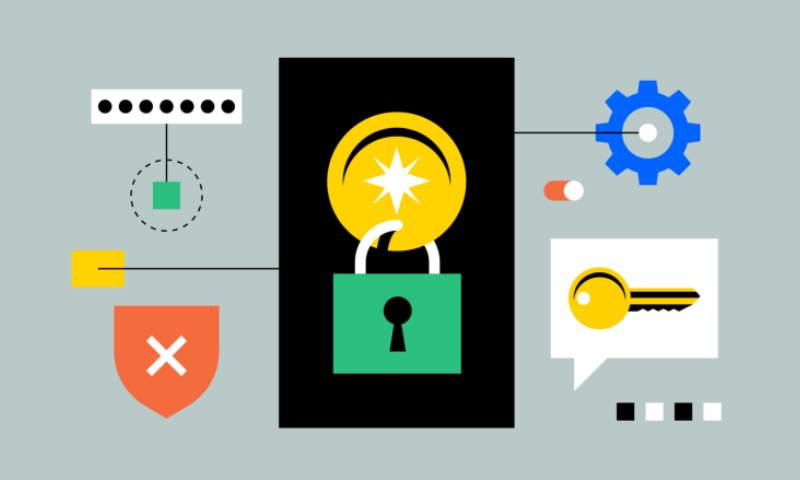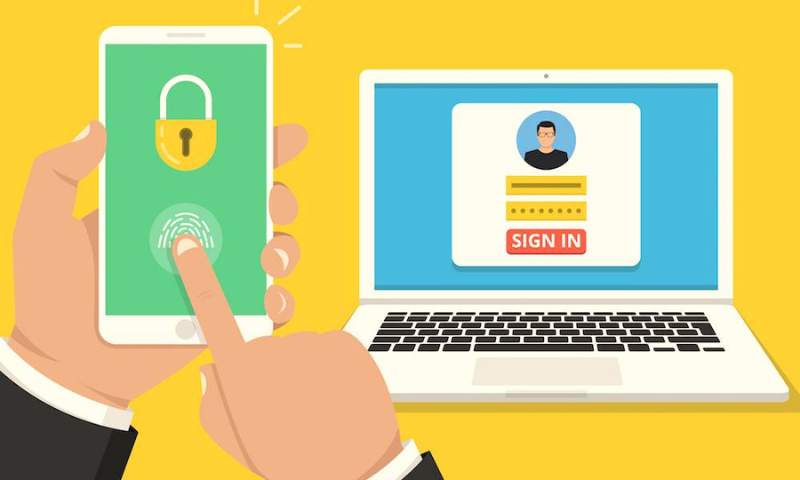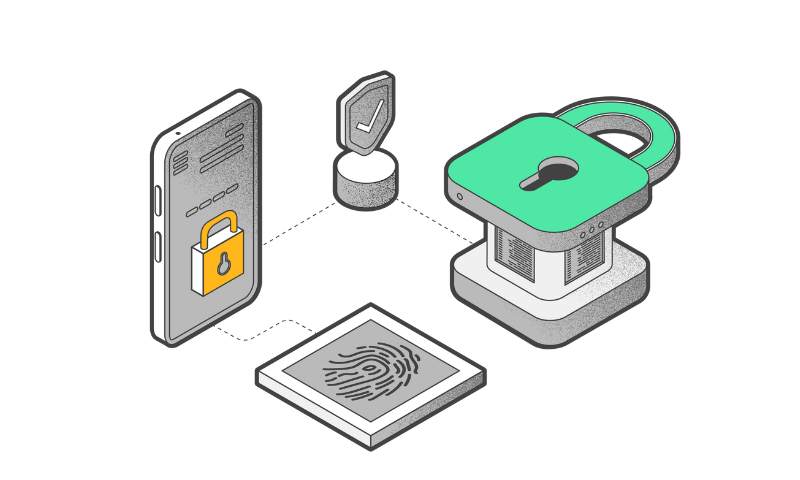Two-Factor Authentication for Crypto 2024: Your Ultimate Safety Net
You’ve heard the buzz around two-factor authentication (2FA) for crypto 2024, but what’s the deal? It’s your digital armor, the beefed-up guard against hackers out to snag your hard-earned coins. Picture this: your crypto is tucked away, safe and snug, beyond the reach of sly thieves and sneaky scams. We’re digging deep into how 2FA has evolved, how it’s shaping up in 2024, and why it’s the smart move for every crypto user. So, ready up for a deep dive into the future of keeping your digital dough on lock. It’s a wild world out there, but with the right moves, you stay winning.
Exploring the Evolution of 2FA in Cryptocurrency Platforms
Advancements in Authentication for Crypto Assets
We see big changes in how we keep our crypto safe in 2024. Our money lives in a digital world now. So, we must be smart about keeping it out of the wrong hands. Crypto platforms are stepping up their game. They now go beyond just asking for a password. They want something else to know it’s really you.
Two-factor authentication, or 2FA, is our safety net. It double-checks your identity. First, you use your password. Then, you prove who you are in another way. You might get a code on your phone or use a special USB key.
These latest 2FA methods for digital currencies mix top-notch tech with ease of use. They weave 2FA right into blockchain technology. This means better protection for your digital wallet. Say goodbye to simple logins. And say hello to digital wallet two-step verification.
Crypto account safety is soaring. We’re talking codes that change every few minutes. This is called time-based OTP for cryptocurrencies. You get them from apps on your phone. It’s like magic. New code, new you, every time you log in.
Incidents from the past show us why this matters. Remember when folks lost their coins to hackers? Such a scare. But we learn and grow. We get wiser and build stronger walls around our assets.
Biometric Verification for Enhanced Security
Now, let’s chat about something cool: biometric verification for crypto. Your unique features can be your key to your coins. Think about it. Your face, your finger, your voice. They’re all yours and only yours.
Biometrics are a hot topic. Why? Because they make stealing your info tough as nails. Your face and fingerprints don’t leak like a password might. This kind of personal touch brings us closer to bulletproof crypto security enhancements 2024.
The newest biometric verification methods are amazing. They team up with mobile authentication apps for cryptocurrency. These apps let you use your face or fingerprint to get into your account. Fast and safe, all in one tap.
Phishing is a mean trick used to steal your login info. So we also need phishing-resistant 2FA in crypto exchanges. These new methods make phishing attacks almost pointless. They’re too clever for the tricksters.
Hardware tokens for bitcoin security can be part of your 2FA. You carry these little devices with you. They’re like having a security guard in your pocket. Only with the token, you can get into your account.
A crypto security architect like me lives for this stuff. Seeing 2FA integration in blockchain technology grow is thrilling. It’s my job to make sure your crypto journey is smooth and secure. Every step of the way, I’m here, building up the walls and keeping the gate locked tight.
So, when we talk about crypto security in 2024, remember this. Strong 2FA is like a trusty friend. It’s got your back, keeping your digital treasures locked down tight.
Enhancing Digital Wallets with Two-Step Verification
Time-Based OTP for Cryptocurrencies
Have you heard about time-based OTPs for your crypto? These are one-time passwords that work for just a short period. Imagine a key that changes every minute. You need the right key at the right time to get into your digital wallet. This keeps your crypto safe because hackers can’t use an old key.
Time-based OTPs link with your digital wallet. Each password shows up, works for 30 seconds, then a new one comes. It’s like a digital dance where the rhythm is security. This method pairs well with apps on your phone. Say goodbye to hackers who watch and steal your password!
Mobile Authentication Apps for User Convenience
Now, let’s talk about mobile apps for securing your crypto. Your phone is always with you, right? So, using it for extra security makes sense. I’m talking about apps that verify it’s really you trying to access your coins. They use push notifications, codes, or even your fingerprint. Pretty neat, huh?
With these apps, when you log in to your wallet, the app buzzes. It asks, “Is this you?” You tap “Yes” if it is. See, you’re in control, and it’s all at your fingertips. It’s simple. You don’t need to remember a new password every time. Your phone becomes a powerful guardian for your digital gold.
In crypto, as in life, staying ahead of trouble is key. By adding these layers, like time-based OTPs and phone apps, to your wallet, you’re building a fortress. And guess what? Hackers don’t like climbing walls. They’ll look for an easier target. Now, that’s what I call smart protecting!
Remember, secure doesn’t have to mean hard. With the right approach, you’re just a tap away from peace of mind. Your wallet deserves this kind of armor. Let’s keep your crypto where it belongs – with you.
Strengthening Crypto Exchanges with Phishing-Resistant Measures
The Role of U2F Devices in Preventing Unauthorized Access
U2F devices add a tough layer to your crypto security. U2F, or Universal 2nd Factor, uses a small physical token, often looking like a USB stick, that you plug into your device when accessing your crypto account. When you log in, you’ll not only need your password but also this token. This extra step makes it harder for bad guys to break in. Since you must have the token with you, stealing just your password won’t cut it. The small effort of using a U2F key could save your digital coins from theft.
Hardware tokens for bitcoin security, like YubiKey, are popular U2F devices. They’re handy because they can take a beating and still keep your account locked tight. Plus, they are easy to use. Just touch the token when it flashes, and you’re in. That’s it. And even if a phishing attack tries to trick you, without that physical key, they’re stuck outside.
Optimizing SMS 2FA to Mitigate Vulnerabilities
SMS 2FA might seem easy but it has its risks. Crooks can intercept text messages or trick your phone company into giving them your SIM card’s data. This is called SIM swapping, and it’s bad news for your crypto. We can fight this. By linking your 2FA to something you have—like a mobile app or hardware token—instead of a text message, you’re one step ahead. Mobile authentication apps for cryptocurrency generate codes that change every few seconds. This means that even if someone gets your code, it’s useless in moments.
Push-based authentication services send a notice to your device that someone is trying to log in. You just hit ‘approve’ or ‘deny.’ This works great unless the bad guys have your phone. That’s why recovery options for crypto 2FA are critical. If you lose your device, you need a safe way to get back into your account without handing over the keys to a thief.
Authenticator apps for Ethereum and other digital currencies also use time-based OTP, or one-time passwords. These need to sync with the correct time to work. So, even if someone gets your password, without the current OTP, they’re out of luck.
Staying safe while using cryptocurrencies means using the best tools out there. U2F devices for crypto security and time-based OTP for cryptocurrencies are today’s heroes in the fight against cyber threats. We’re taking crypto security to new heights, making it tough for phishing attacks to win. And as we move forward, expect even more tough, smart security measures to keep your digital treasure safe.
The Future of Crypto Security: Beyond Passwords and Pins
Implementing Advanced Biometrics like Face and Voice Recognition
I’ll tell you straight; we’re moving past passwords and pins. Now, it’s all about your face and voice. That’s right, tech that knows you by how you look and sound. Imagine walking up to your device, it looks at you, hears you, and bam—you’re in your crypto wallet.
This tech is more than cool; it’s super safe. No one else has your face or voice. So crooks can’t break in as easy. Bad guys hate this stuff. Can you blame them? They can’t fake being you. It’s like having a loyal guard dog that only listens to you.
You might ask, “How safe is it?” I’ll tell you: very safe. Crooks have to do more than steal a password, they need you there! It’s tough for them, great for us. This is how we’re boosting crypto account safety. We’re not playing games here. We’re locking it down.
For you shopping fans, this means safer buys with bitcoins. Just show your face or speak, no need to type anything. It’s like having a personal lock on your digital cash. Kids trying to buy games with your coins? Just smile; they can’t get past your face lock.
Think about how you unlock your phone. It’s pretty much like that, but for your crypto stuff. It’s handy, fast, and really safe. This stuff is the hot new thing in crypto security enhancements. And we’re just getting warmed up.
Integrating Smart Cards and Security Keys for Multi-Layered Protection
Ever seen those spy movies where they need a special card to open a secret door? Well, smart cards for blockchain are like that. They’re your personal key to your coin stash. You keep a card with you, and without it, no one’s getting in.
Then there are security keys, kind of like those smart cards. Ever heard of a YubiKey? It’s a tiny gadget you plug into your computer that says, “Yep, this person’s cool. Let them in.” It’s a solid wall for hackers to run into. They might have your password, but they don’t have your physical key. Tough luck for them, peace of mind for you.
These pieces of tech are part of the latest 2FA methods for digital currencies. It’s like having a double door. Even if someone sneaks past the first one, there’s still one more stopping them.
Now, some folks worry they might lose these keys or cards. Fair point, but we have backup plans. We also put effort into making recovery options for crypto 2FA safe and simple.
So we’re looking ahead, folks. Our coins are getting the VIP treatment. We’re making sure your crypto journey in 2024 is smooth sailing, with your assets shielded by layers upon layers of top-notch security. If you’ve ever felt worried about your crypto, this is the game-changer. Welcome to a future where your digital wallet has an invisible fortress around it. A future where your face, your voice, and your personal gadgets team up to be your ultimate bodyguards in the wild world of crypto.
We’ve seen a lot. We learned how 2FA molds crypto security, from simple steps to smart tech. Devices now guard against fake tricks, and new biometrics can tell it’s really you. Crypto wallets are safer with codes that change and apps that make it easy to check in. The future shines bright with faces and voices as keys, and layers of smart cards and security keys. Safety in crypto keeps getting better. We must keep up, stay smart, and use these tools right. Keep your coins safe and your mind at ease. Stay sharp out there!
Q&A :
What is two-factor authentication (2FA) in cryptocurrency security?
Two-factor authentication (2FA) adds an extra layer of security to cryptocurrency accounts beyond just a username and password. When 2FA is enabled, after entering your password, you will be required to verify your identity through a second method. This could be something you know (like a PIN), something you have (like a mobile device), or something you are (like a fingerprint).
Why is 2FA important for crypto investors?
For crypto investors, security is paramount. Digital currencies are attractive targets for hackers and cybercriminals. 2FA provides a critical security barrier that makes unauthorized access to accounts significantly more challenging. It ensures that even if a password is compromised, the attacker still can’t access the account without the second factor.
How do I set up two-factor authentication for my cryptocurrency wallet or exchange?
Setting up 2FA usually involves going into the security settings of your cryptocurrency wallet or exchange platform. You’ll often see options to use a mobile authenticator app, SMS messages, or hardware tokens. Follow the platform’s instructions, which typically involve scanning a QR code with the authenticator app or entering a code sent to your device.
Can 2FA be bypassed, and how do I keep my crypto account secure?
While 2FA greatly enhances security, no system is infallible. Phishing attacks or SIM swapping are methods that can potentially bypass 2FA. Maintaining security involves being vigilant: never share your 2FA codes, be cautious with the communication you receive, and consider using a hardware token or an app over SMS if possible.
What are the different types of two-factor authentication available for cryptocurrency protection?
There are three main types of 2FA for cryptocurrency protection: something you know (like a password or a PIN), something you have (like a smartphone with an authenticator app or a hardware token), and something you are (biometrics like fingerprints or facial recognition). Each offers different levels of convenience and security, with physical devices offering more robust protection.






